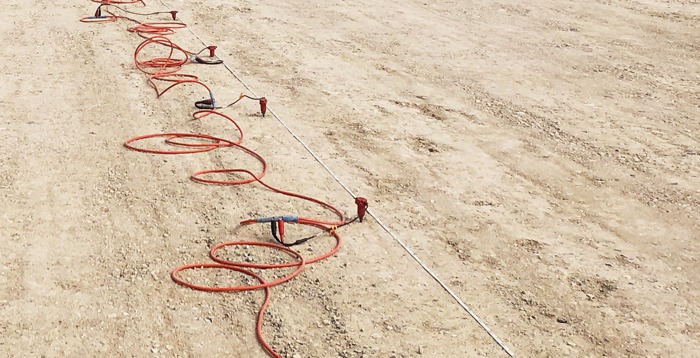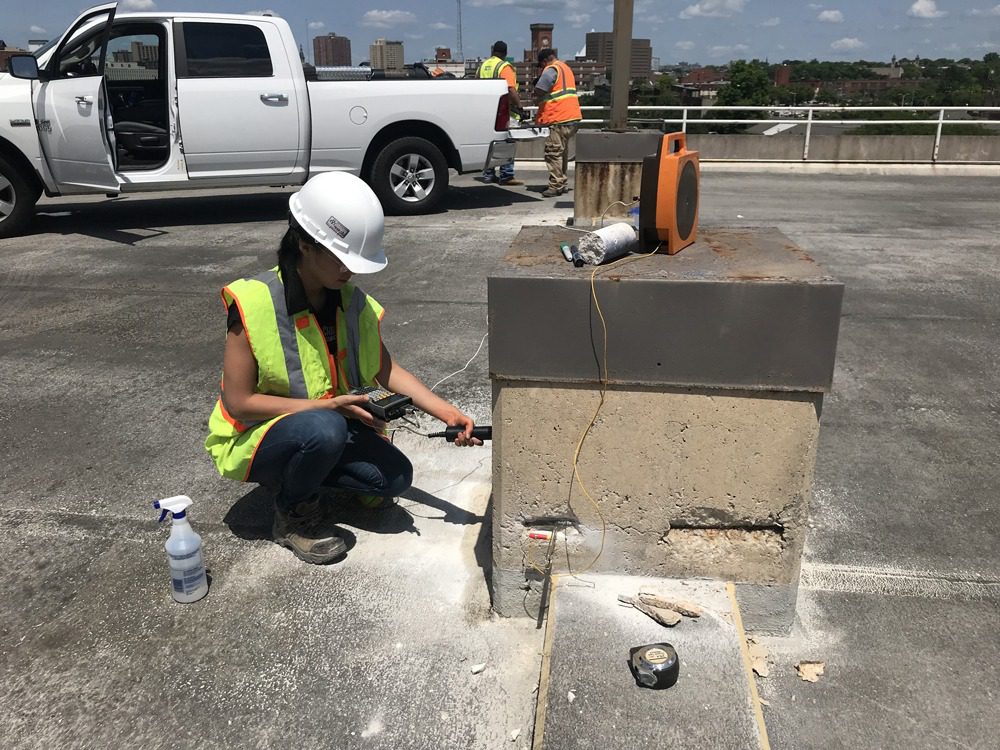Seismic
Several different seismic methods are used in geophysical surveys. Seismic refraction uses P- and S-wave energy to map vertical and lateral subsurface changes. Multi-channel Analysis of Surface Waves (MASW) is a nondestructive seismic method used to evaluate the shear-wave velocity distribution and arrangement of overburden soil deposits and bedrock. The Spectral Analysis of Surface Waves (SASW) method is applied to soil sites to determine the in-place shear wave velocity profile of soil and rock without requiring a borehole. The Seismic Reflection method uses seismic energy to identify geologic boundaries and is used for geotechnical engineering, environmental contamination flow modeling, and groundwater projects. Crosshole Seismic (CS) and Downhole Seismic (DS) tests are performed on soil and rock sites to measure the in-place shear and compression wave velocity profiles of the soil and rock versus depth. These measurements are then used for the engineering design of structures planned at those locations.

Refraction (SRT)
Seismic Refraction Tomography (SRT) uses P- or S-wave travel times to map vertical and lateral changes in the subsurface.
Test for:
- Compressional and Shear Wave Velocity Values
- Soil Properties
- Depth to and Shape of Bedrock

Multi-Channel Analysis of Surface Waves (MASW)
MASW is a seismic method that measures the shear-wave velocity distribution, thereby can be used to measure the arrangement of overburden and bedrock. It analyzes the dispersion of surface waves (usually the fundamental-mode Rayleigh waves).
Test for:
- Shear Wave Velocity
- Soil Stiffness
- Depth to and Shape of Bedrock

Seismic Reflection
The Seismic Reflection method uses seismic energy (created by hammer impacts, accelerated weight drops, explosives, or vibroseis trucks) which gets reflected from geologic boundaries that have a velocity contrast.
Determine:
- Geologic Structure for Geotechnical & Groundwater Projects

Crosshole & Downhole Seismic
Crosshole Seismic (CS) and Downhole Seismic (DS) tests are performed on soil and rock sites to measure the in-place shear and compression wave velocity profiles of the soil and rock versus depth.
Test for:
- Dynamic soil and rock properties
- Shear and compressional wave velocity values
- Poisson’s Ratio
- Elastic moduli

